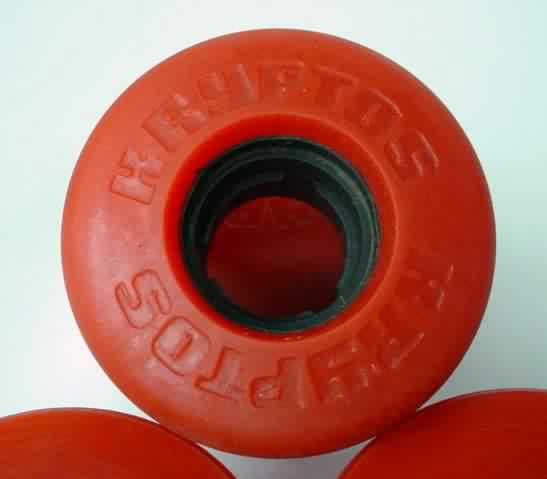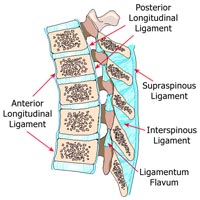
A teacher's greatest dilemma is whether to teach gates or stone bridges.
Getting around a traditional Chinese city, village or home is all about going through gates. Thus
"going through a gate" is a primary metaphor used to describe learning something or getting something done. It is also a primary metaphor for describing movement of qi around the body. For instance, the shoulder and the hip each have a major gate that allows qi to move between the limbs and the torso.
I did a lot of skateboarding in my teens. Every day I skated steep hills with (by todays standards) large
70 millimeter Kriptonics wheels. I'm what the kids today call O.G. (Old Gangster). There are very few people with this particular experience around. Downhill skiers and snowboarders have some comparable skills, so I

can at least communicate with them, but snow is softer than concrete and there aren't a lot of cars on the slopes.
Skateboarding was a gate I passed through to get to my current understanding of internal martial arts. It still informs my practice. When I heard the taijiquan saying "You must go left in order to go right" I understood it immediately, skateboarding works the same way. If you are going to make a high speed 90 degree turn into traffic you have to feel your pathway through space and along the ground before you make the actual
sequence of turns that will get you into the little space between the the moving cars and the parked cars. Just turning to the right will get you squished.

Now when I teach, I'll say something like "Do this," or "Copy me," but nine times out of ten the student doesn't quite do what I'm hoping they will do. So I'll describe what I'm doing, or let the student feel my torso moving. But often they still don't "get it." I think, o.k., if I was in their body I would just do "this" and "this" and "that other thing." From where I'm standing I can see exactly what they need to do to get to where I am.
It is as if there were a stone bridge that, if they could see it, they could just walk across.But they don't see the bridge. So I have a choice. I can either keep trying to get them to see the bridge, or I can take them through some of the gates I passed through on my way to achieving my current skill level.
I do have some memory of the hundreds of gates I passed through to get to my current skill level in internal martial arts. From a teacher's point of view, the only proven method for getting to where I am, is to pass through all the same gates I passed through. However, it isn't

realistic for me to ask all my taijiquan students to take up downhill skateboarding.
What most teachers do at this point is to make up a list of gates (exercises, experiences) that will hopefully be a shorter route to excellence than the one the teacher took to get there. Some of the gates I teach are ones I passed through myself, some are gates that I think are improvements on the ones I passed through, and some are gates I put there because I'm hoping that the student might notice the stone bridge off to their left on the way through.
Every teacher, whether he is rigid, traditional, experimental, or inspired, has to decide whether to point to the stone bridge, or guide students through gates. I wish I understood this when I first started studying gongfu.

 Chris at Martial Development asked people to try their hand at self-criticism. But gee, isn't calling my blog Weakness with a Twist enough for you?
Chris at Martial Development asked people to try their hand at self-criticism. But gee, isn't calling my blog Weakness with a Twist enough for you?
 There are many Tianshi lineages but there is one individual in each generation who is the central Tianshi. This person comes from a continuous family lineage going back to Zhang Daoling. During the Dynastic eras of China the Tianshi had a palace at Dragon Tiger Mountain (Longhushan). To get a sense of the importance of the Tianshi it helps to understand that all building and construction in China has always been regulated by the government. No building was allowed to be built larger than the Emperor’s palace. We get a sense of how important the Tianshi was by noting that the Tianshi’s palace was specifically built (roughly) six feet smaller than the Imperial Palace. Needless to say, the role of Tianshi was central to the religious life of the country and the functioning of the state, and because of this, the Tianshi is sometimes called the Daoist Pope.
There are many Tianshi lineages but there is one individual in each generation who is the central Tianshi. This person comes from a continuous family lineage going back to Zhang Daoling. During the Dynastic eras of China the Tianshi had a palace at Dragon Tiger Mountain (Longhushan). To get a sense of the importance of the Tianshi it helps to understand that all building and construction in China has always been regulated by the government. No building was allowed to be built larger than the Emperor’s palace. We get a sense of how important the Tianshi was by noting that the Tianshi’s palace was specifically built (roughly) six feet smaller than the Imperial Palace. Needless to say, the role of Tianshi was central to the religious life of the country and the functioning of the state, and because of this, the Tianshi is sometimes called the Daoist Pope. On the other hand, most of the precepts have some solid reason behind them. Monastic Daoists often followed their Buddhist roots and went with vegetatianism. While hermit Daoists usually had more limited food choices, so more flexibility. However, if you have a choice and you are practicing meditation, the category of "hot" or 'heat producing" foods is to be avoided because it has a tendency to make you alternately horny and sleepy.Â
On the other hand, most of the precepts have some solid reason behind them. Monastic Daoists often followed their Buddhist roots and went with vegetatianism. While hermit Daoists usually had more limited food choices, so more flexibility. However, if you have a choice and you are practicing meditation, the category of "hot" or 'heat producing" foods is to be avoided because it has a tendency to make you alternately horny and sleepy.  In Japanese, which uses Chinese written characters, Dao becomes "do," in many familiar arts like Karatedo, Judo, Aikido, Budo (the warrior code), and Chado (the art of tea).
In Japanese, which uses Chinese written characters, Dao becomes "do," in many familiar arts like Karatedo, Judo, Aikido, Budo (the warrior code), and Chado (the art of tea).
 The concept of Shen has so many meanings in Chinese that it probably deserves a whole book. The shen I'm talking about here is the one that is most often translated "spirit" and is the lighter more expansive aspect of qi. (I'm not going to attempt a comprehensive definition.)
The concept of Shen has so many meanings in Chinese that it probably deserves a whole book. The shen I'm talking about here is the one that is most often translated "spirit" and is the lighter more expansive aspect of qi. (I'm not going to attempt a comprehensive definition.) I believe that hormones have a big effect on shen. How many of us have known a slender woman who once a month asks if we think she is fat? The first time this happens we laugh and say, "Yeah your a regular hippo." The second time this happens we say, "No, honey, of course not," only to be accused of being patronizing or worse. No doubt most of us have learned, through trial and error, that a failure to respond will be received as "ignoring," and that the best response is an audible but non-verbal response:
I believe that hormones have a big effect on shen. How many of us have known a slender woman who once a month asks if we think she is fat? The first time this happens we laugh and say, "Yeah your a regular hippo." The second time this happens we say, "No, honey, of course not," only to be accused of being patronizing or worse. No doubt most of us have learned, through trial and error, that a failure to respond will be received as "ignoring," and that the best response is an audible but non-verbal response: Martial Development
Martial Development
 move just one part. Each vertebral-body (bone) can tilt forward or backwards somewhat like Venetian blinds.
move just one part. Each vertebral-body (bone) can tilt forward or backwards somewhat like Venetian blinds. Figure 10. A sagittal view of the human thoracic spinal cord, showing the (1) intervertebral discs, (2) vertebral bodies, (3) dura, (4) epidural space, (5) spinal cord, and (6) subdural space. A thick ligament, the anterior longitudinal ligament forms the anterior border of the spinal column. The posterior longitudinal ligament form the posterior border of the vertebral bodies.
Figure 10. A sagittal view of the human thoracic spinal cord, showing the (1) intervertebral discs, (2) vertebral bodies, (3) dura, (4) epidural space, (5) spinal cord, and (6) subdural space. A thick ligament, the anterior longitudinal ligament forms the anterior border of the spinal column. The posterior longitudinal ligament form the posterior border of the vertebral bodies. Seeing as Thanksgiving is coming up in the U.S.A., here is a post on food and culture that might reveal something about gongfu as well.
Seeing as Thanksgiving is coming up in the U.S.A., here is a post on food and culture that might reveal something about gongfu as well. Chinese are most concerned with the way food feels once it enters their stomach. Thus the inexpensive noisy restaurant around the corner, which is always packed, is decorated with intensionally unappealing bright orange and green triangles and circles. Why waste money on decor, put your effort in to cooking.
Chinese are most concerned with the way food feels once it enters their stomach. Thus the inexpensive noisy restaurant around the corner, which is always packed, is decorated with intensionally unappealing bright orange and green triangles and circles. Why waste money on decor, put your effort in to cooking. Japanese are most concerned with food appearance and texture. Each type of food has its own rituals of presentation, and people pay close attention to how it feels in their mouth. When eggs are used in sushi they layer them, pouring the beaten eggs from up high multiple times. It doesn't effect the taste just the texture. Of course Japanese eggs also happen to be the best I've ever tasted, but that is because eggs are treated with ritual care.
Japanese are most concerned with food appearance and texture. Each type of food has its own rituals of presentation, and people pay close attention to how it feels in their mouth. When eggs are used in sushi they layer them, pouring the beaten eggs from up high multiple times. It doesn't effect the taste just the texture. Of course Japanese eggs also happen to be the best I've ever tasted, but that is because eggs are treated with ritual care.
 A teacher's greatest dilemma is whether to teach gates or stone bridges.
A teacher's greatest dilemma is whether to teach gates or stone bridges. can at least communicate with them, but snow is softer than concrete and there aren't a lot of cars on the slopes.
can at least communicate with them, but snow is softer than concrete and there aren't a lot of cars on the slopes.
 realistic for me to ask all my taijiquan students to take up downhill skateboarding.
realistic for me to ask all my taijiquan students to take up downhill skateboarding.